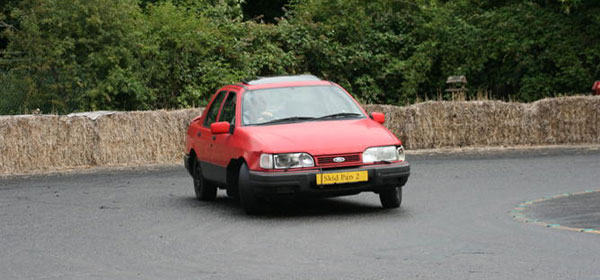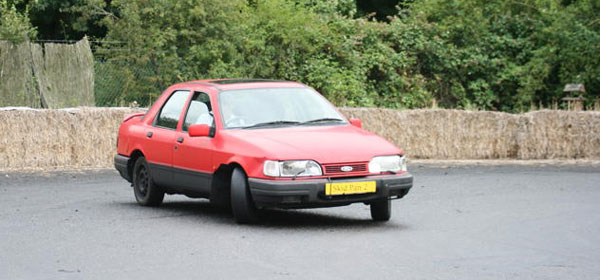All driving tests are undertaken by the Driving Standards Agency (DSA) in the UK and at the moment are undertaken at specific driving test centres. Whether you learn by hourly lessons or via a driving crash course you will have to do a manoeuvre and possibly a “Controlled Stop” or more commonly known as an “Emergency Stop”.
A third of tests will have a Controlled Stop included and who has it included is purely random and decided by the driving test centre manager. You will not be told whether you are to get an Emergency Stop until the moment you are asked to do it.
Initially the examiner will pull you over on the left hand side of the road and will explain that they want you to pull away and get up to speed and at some point in the road they will raise their hand and say “stop”. At this point they want you to complete a Stop as if a child had run out in front of you. In practice what they want you to demonstrate is that you can stop the car immediately without skidding.
So you pull away and get up to speed, the examiner will look directly through the back window to ensure it is safe and will then raise their hand and say “Stop”. You at this point will apply the foot brake hard and fast, followed by the clutch. If you don’t get the clutch quick enough it will mean that you stall the car (we will come back to this later). If you put the clutch down before the brake you will coast along the road making your stopping distance longer. You will fail for this!
Now the car should be stopped, apply the hand brake and put the car into the neutral gear position. The car is safe and you can now relax!
The examiner will now ask you to continue on down the road.
If you stalled the car it is now time to restart the car whilst the car is in neutral and the handbrake is on.
You must now ensure it is safe to pull away but you are in the middle of your lane so you must make sure you complete all round checks;
Left Blind Spot
Left Mirror
Centre Mirror
Right Mirror
Right Blind Spot
If it is safe to pull away do so and complete your test with confidence.
What if you skid the car?
If you were skid the car in a minor capacity it does not mean that you have failed as always do not presume you have failed because you made a mistake. Skids are caused by the tyres loosing traction with the road surface and to regain control pump the brake pedal, up and down, a couple of times and this will ensure you stop as quickly as possible. Most modern cars will not need to have the brakes pumped as the have Antilock Braking Systems (ABS) built in which recognises the skid and releases and applies the brakes automatically, so DO NOT pump the brakes if you have ABS fitted.
If you want to learn to control a car skidding in adverse weather conditions we would always suggest you take a lesson on a skid pan, as shown below.


Please call us for more details on 08458 121 007.


I simply wished to say thanks again. I do not know the things that I would have done in the absence of the entire information revealed by you about this concern. It seemed to be a very scary matter in my view, however , coming across the very well-written tactic you dealt with the issue forced me to leap over joy. I’m grateful for this assistance and then wish you really know what a powerful job you are always doing teaching people with the aid of your blog. I’m certain you have never met any of us.
Always willing to help anyone learning to drive whether I know them or not, thankyou for your reply.